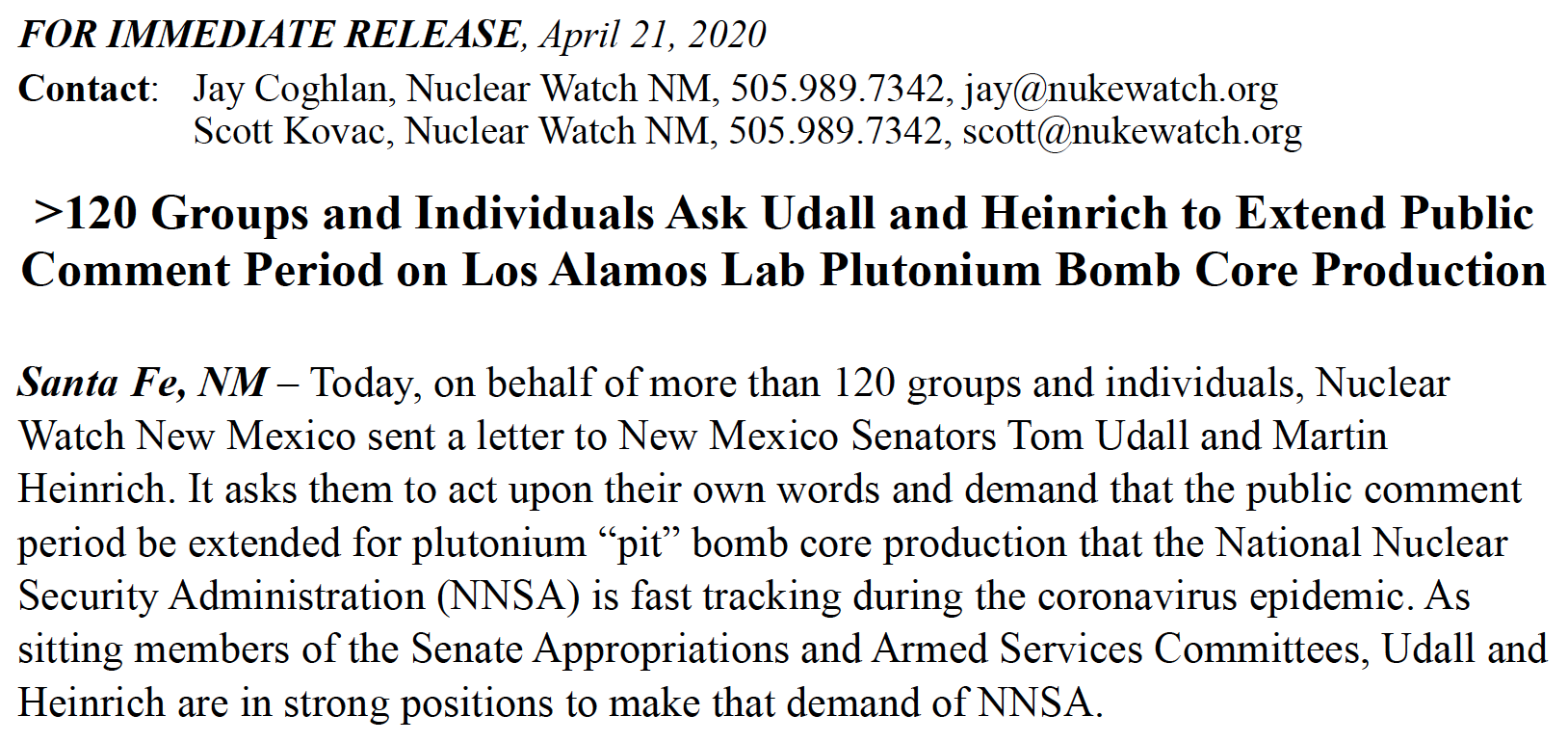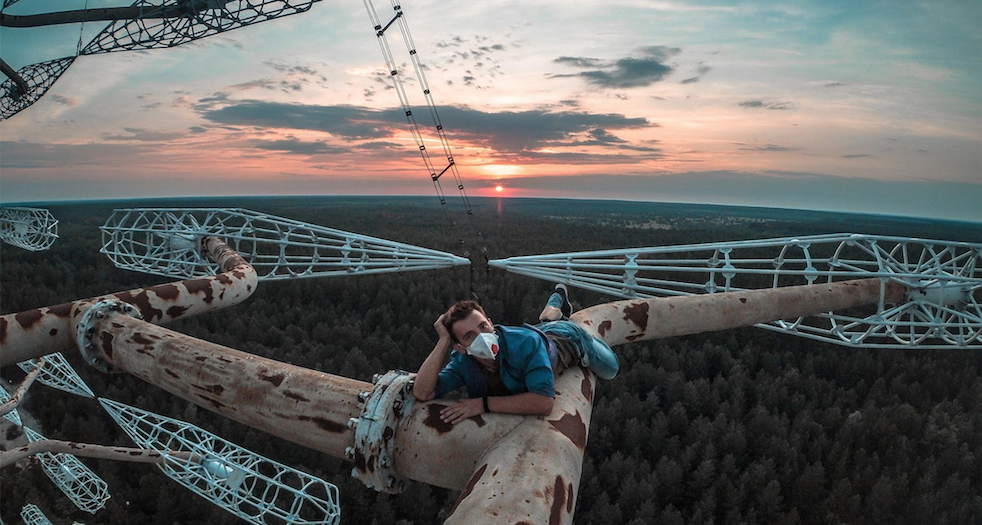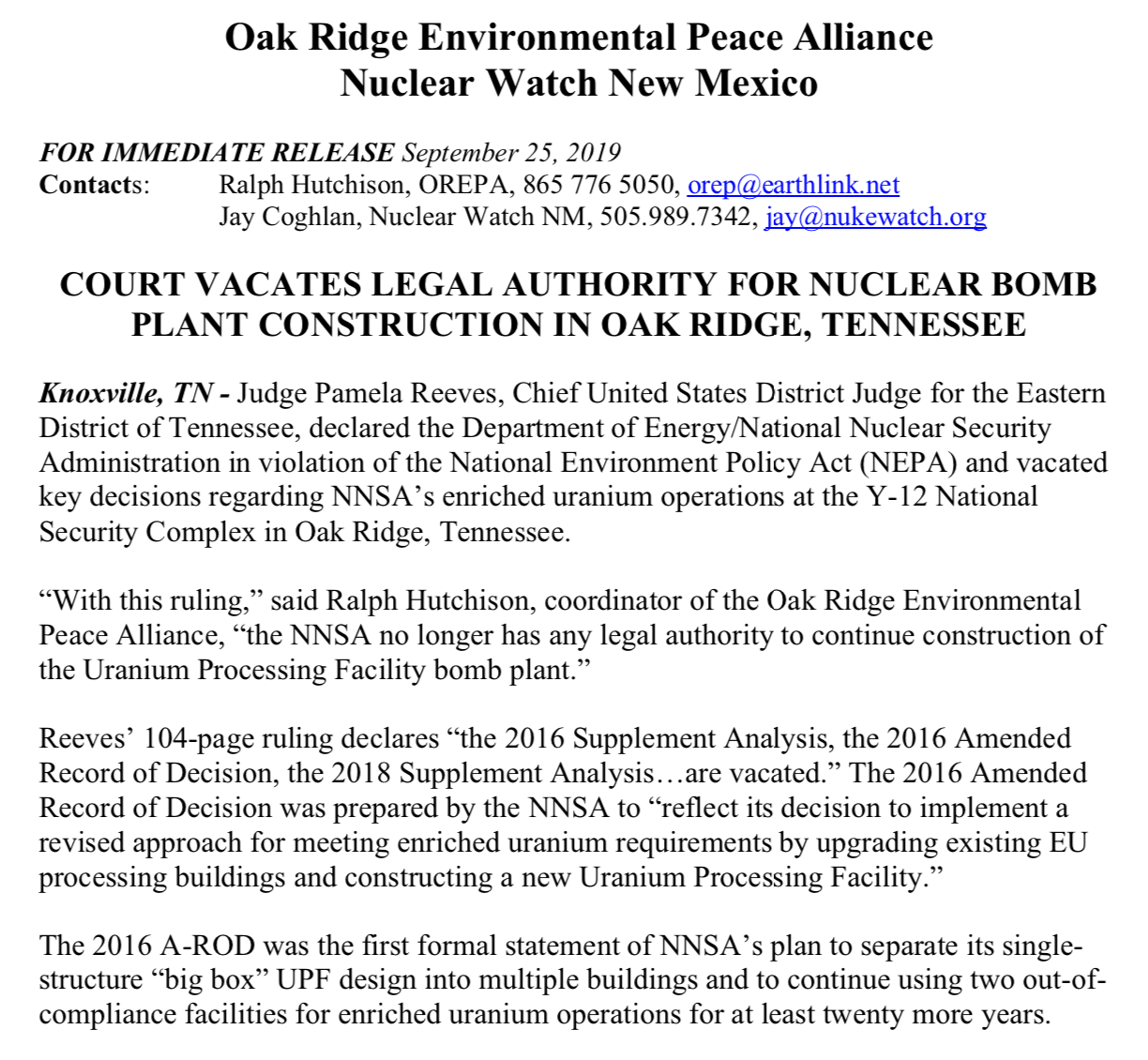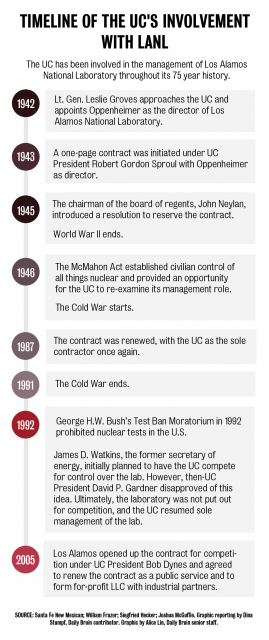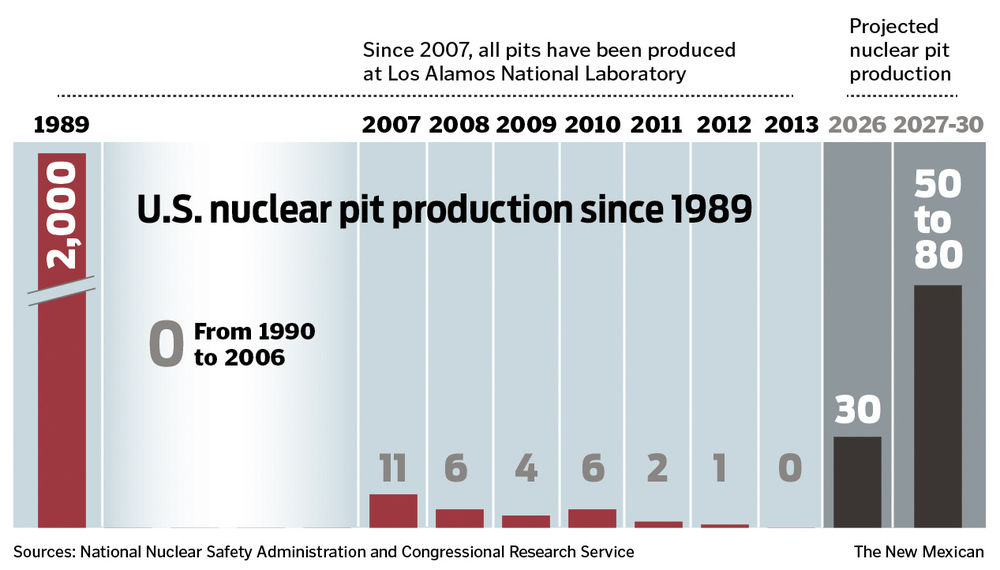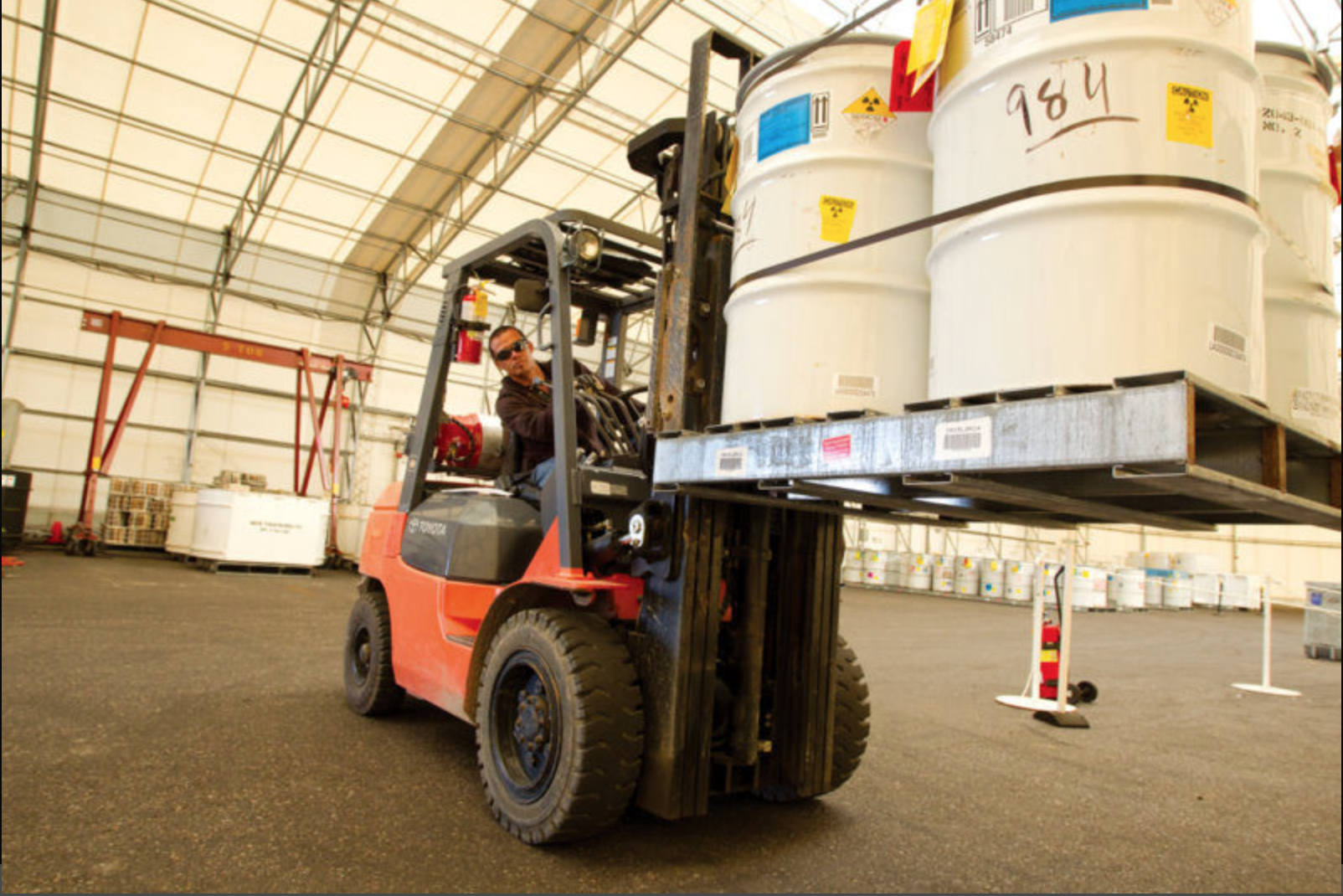2020
Letter With >120 Group & Individual Sign-Ons Asks Udall and Heinrich to Extend Public Comment Period on Los Alamos Lab Plutonium Bomb Core Production
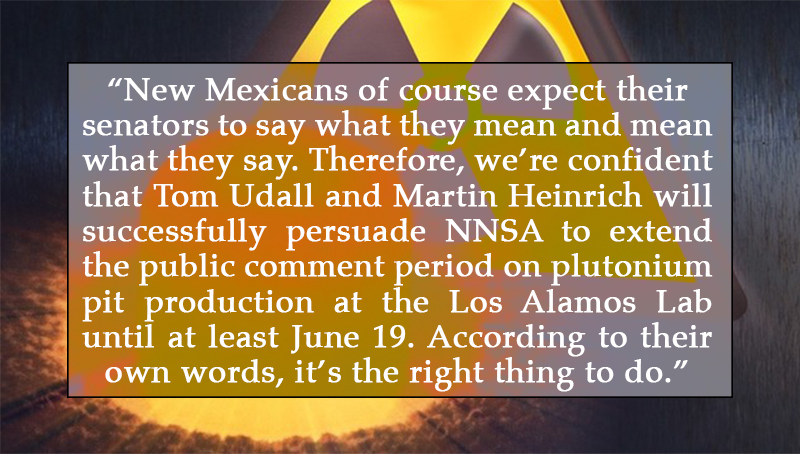
Today, on behalf of more than 120 groups and individuals, Nuclear Watch New Mexico sent a letter to New Mexico Senators Tom Udall and Martin Heinrich. It asks them to act upon their own words and demand that the public comment period be extended for plutonium “pit” bomb core production that the National Nuclear Security Administration (NNSA) is fast tracking during the coronavirus epidemic. As sitting members of the Senate Appropriations and Armed Services Committees, Udall and Heinrich are in strong positions to make that demand of NNSA.
There’s a new world super-villain (COVID-19), it’s time for nuclear disarmament
Dingiswayo Mokoena | diggers.news
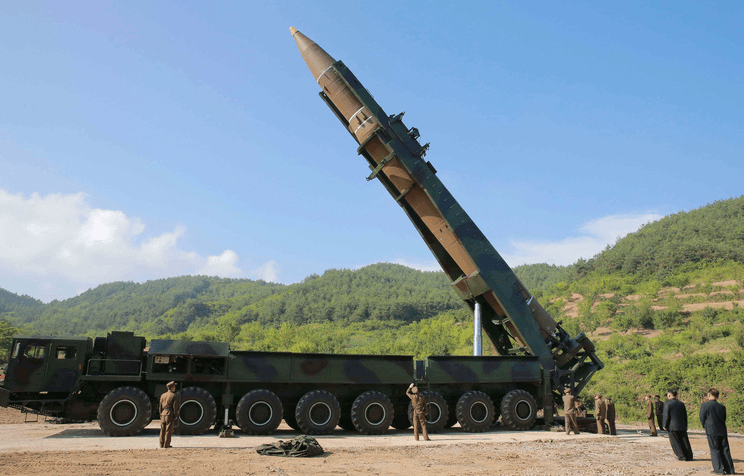
THE Associated Press (AP) this week reported that a barrage of North Korean missiles fired from both the ground and fighter jets splashed down on the waters off the peninsular’s east coast on Tuesday. AP further reports that North Korea also launched several Sukhoi-class fighter jets that fired an unspecified number of air-to-surface missiles toward the North’s eastern waters. According to a South Korean defence official, North Korea seems to be resuming its military drills that it had scaled back due to concerns about the coronavirus pandemic. This, consequently, pushing back the deadlocked denuclearisation negotiations fostered by the United Nations.
How the Military-Industrial Complex Is Using the Coronavirus
Arms industry lobbyists are addressing this pandemic and preparing for the next by pushing weapons sales.
ARTICLE BY: SCOTT WYLAND | santafenewmexican.com
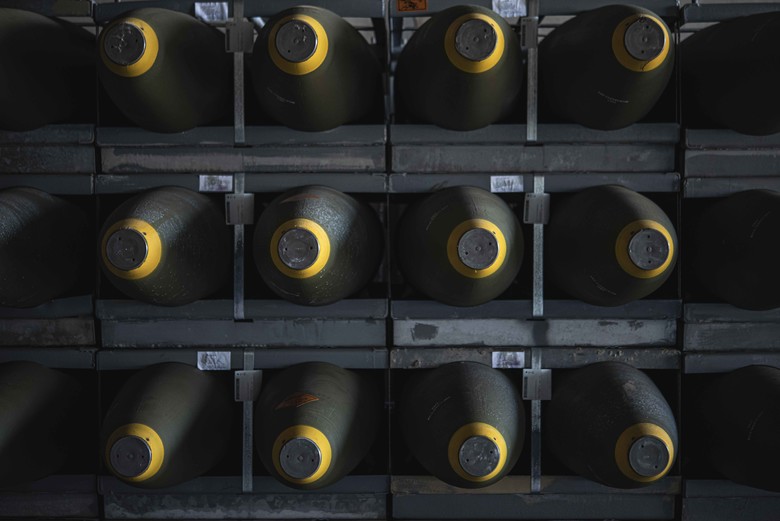
There’s a battle brewing for the future of national security spending.
On one side, there’s a growing bipartisan consensus that the coronavirus has fundamentally changed the way we should think about national security. Ben Rhodes, former deputy national security adviser in the Obama White House, recently argued in The Atlantic that we have to rethink the orientation and priorities of our government, and “it makes no sense that the Pentagon budget is 13 times larger than the entire international-affairs budget, which funds the State Department, USAID, and global programs at other agencies.”
Kori Schake, the director of foreign and defense policy studies at the conservative American Enterprise Institute, said the bottom line is that “we’re going to see enormous downward pressure on defense spending because of other urgent American national needs like health care.”
SFCC, Los Alamos lab join to offer machinist program
BY DILLION MULLIN | santafenewmexican.com
Santa Fe Community College and Los Alamos National Laboratory announced last week a new collaboration to revamp the college’s machinist program.
With the campus providing the latest equipment and curriculum and the lab offering hands-on internships, community college President Becky Rowley said she hopes the first group of students can begin working toward a certificate or associate’s degree in the overhauled program this fall.
Congress Should Hit Pause On The New Intercontinental Ballistic Missile
Within just a few years, the estimated cost of GBSD skyrocketed from $62 billion to $85 billion to $150 billion, and is now likely to be even higher.
ARTICLE BY: MATT KORDA | forbes.com
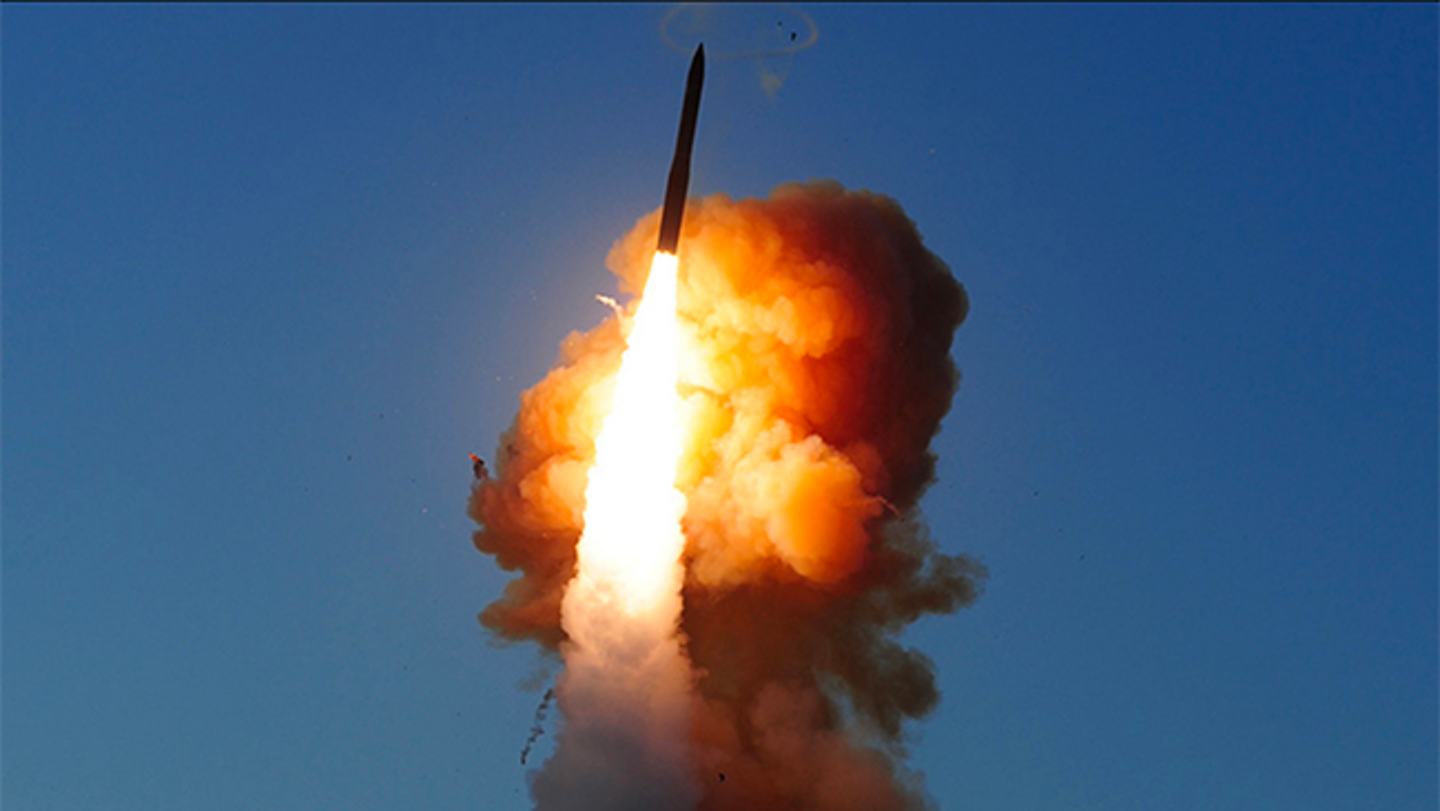 Although the COVID-19 pandemic has caused daily life to grind to a halt, it has had little effect on the military-industrial complex––which, incredibly, appears to be speeding up.
Although the COVID-19 pandemic has caused daily life to grind to a halt, it has had little effect on the military-industrial complex––which, incredibly, appears to be speeding up.
Late last week, the Air Force revealed that it was considering awarding one of its most important contracts––the massive Engineering and Manufacturing Development contract for the next generation of intercontinental ballistic missiles––even earlier than expected, in an attempt to lock the program in as soon as possible.
This news comes only two months after the release of the President’s FY21 budget request, which also raised eyebrows given the dramatic increase to the nuclear weapons budget––and particularly, the tripling of the ICBM budget.
Stalking Chernobyl
Chernobyl is a place of loss and abandonment. The Zone is radioactive. So why do people flock there today? Iara Lee’s fascinating documentary goes with them to find out, and reminds us about life there before the April 26, 1986 nuclear disaster.
ARTICLE BY: LINDA PENTZ GUNTER | beyondnuclear.org
For most of us, Pripyat — the Ukrainian city that has become an iconic symbol of forced abandonment — summons images of drab, Soviet decay. Pripyat is a place of ghastly tower blocks, rusting playgrounds, a deserted Ferris wheel and peeling paint, its workforce trudging like automata to toil at the doomed Chernobyl nuclear power plant just 2.5km away.
But in the opening sequence of Iara Lee’s new documentary — Stalking Chernobyl; exploration after the apocalypse — we see a very different Pripyat, before the April 26, 1986 nuclear disaster. It is a place of singing and roses, swimming pools and picnics, and dancing babushkas.
And then, as someone in the film says, “On April 26, what had once been our pride became our grief.”
The Women Who Told Chernobyl’s Story – And the Charity that Sees Those Consequences First Hand
Three great women writers have done so much to tell the story of Chernobyl. Their focus was not on the accident itself, but its impact on the people of Belarus and Ukraine.
ARTICLE BY: LINDA WALKER | beyondnuclear.org
Alla Yaroshinskaya
When reactor No 4 at the Chernobyl Nuclear Power Plant blew up in the early hours of 26th April 1986, it threw millions of curies of radioactive materials into the air, forming a 2km high plume.
Amongst the most dangerous isotopes it released were iodine 131, caesium 137 and strontium 90.
But according to Alla Yaroshinskaya, a journalist whose tenacity was responsible for revealing much of the subsequent cover-up, the most dangerous substance to escape from the mouth of the reactor did not appear on the periodic table. It was Lie-86, a lie as global as the disaster itself.
Continue reading
Northrop could get $85 billion award to make next-gen ICBMs sooner than expected
Within just a few years, the estimated cost of GBSD skyrocketed from $62 billion to $85 billion to $150 billion, and is now likely to be even higher.
ARTICLE BY: VALERIE INSINNA| defensenews.com
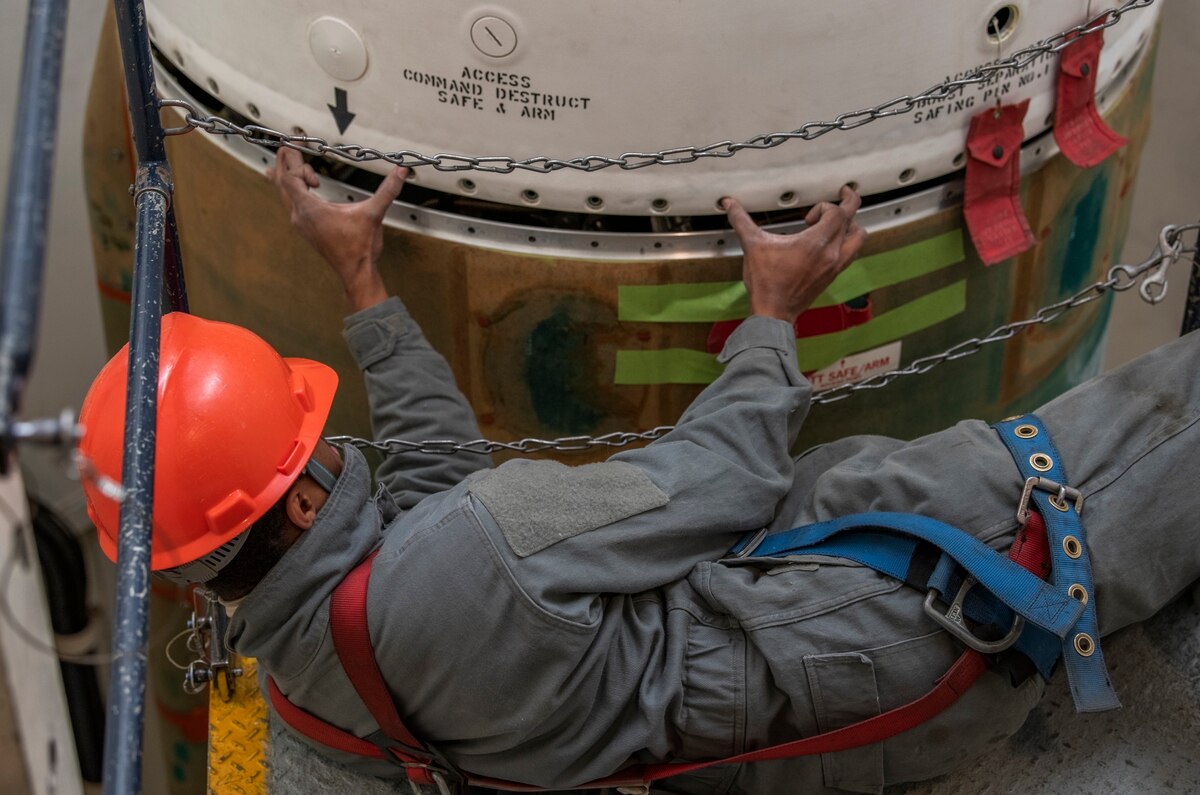
WASHINGTON — An award for the U.S. Air Force’s Ground Based Strategic Deterrent program is slated to be granted by the end of September, but it could happen earlier, the service’s acquisition executive said Thursday.
“I think early award is possible on GBSD,” Will Roper told reporters during a teleconference. “I’m very hopeful, but because GBSD has a large component of classified work, that team is having to go in and maintain workforce in our [sensitive compartmented information facilities] and in our classified spaces. So we’re watching very carefully to make sure the installations are open to allow that work.”
As the sole bidder on the GBSD program, Northrop Grumman is anticipated to win an estimated $85 billion to design and build the Air Force’s next-generation intercontinental ballistic missiles.
Spent Nuclear Fuel from Germany to SRS? Dumping-for-Profit Scheme Drags On & On & Should be Terminated
FOIA Documents Confirm Profiteers Still Pursuing Scheme to Dump Highly Radioactive German Spent Fuel (Graphite “Pebbles”) at SRS – Should be Terminated
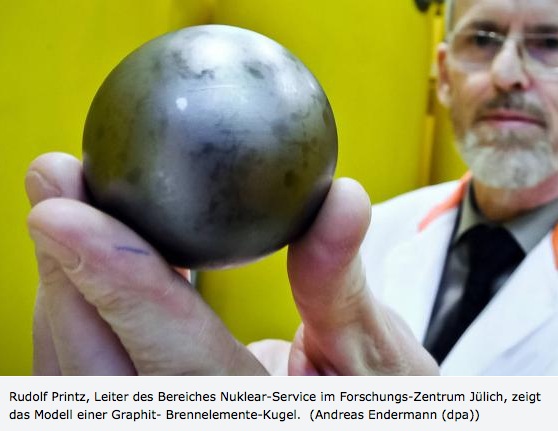 SRS and the German entity Jülicher Entsorgungsgesellschaft für Nuklearanlagen (JEN) are still working on the scheme to import German highly radioactive graphite spent fuel from the Jülich, Germany storage site to SRS for reprocessing and dumping. That this bad idea to import the nuclear waste in large CASTOR casks is continuing has been confirmed in documents obtained by SRS Watch in response to a Freedom of Information Act (FOIA) request received on April 7, 2020.
SRS and the German entity Jülicher Entsorgungsgesellschaft für Nuklearanlagen (JEN) are still working on the scheme to import German highly radioactive graphite spent fuel from the Jülich, Germany storage site to SRS for reprocessing and dumping. That this bad idea to import the nuclear waste in large CASTOR casks is continuing has been confirmed in documents obtained by SRS Watch in response to a Freedom of Information Act (FOIA) request received on April 7, 2020.
SRS Watch first alerted the public in 2013 – at a SRS Citizens Advisory Board meeting – that the US-Germany waste deal was at hand, forcing SRS to admit that was indeed the case. Pursuit of he deal has been dragging on since 2012.
Continue reading
How nuclear forces worldwide are dealing with the coronavirus pandemic
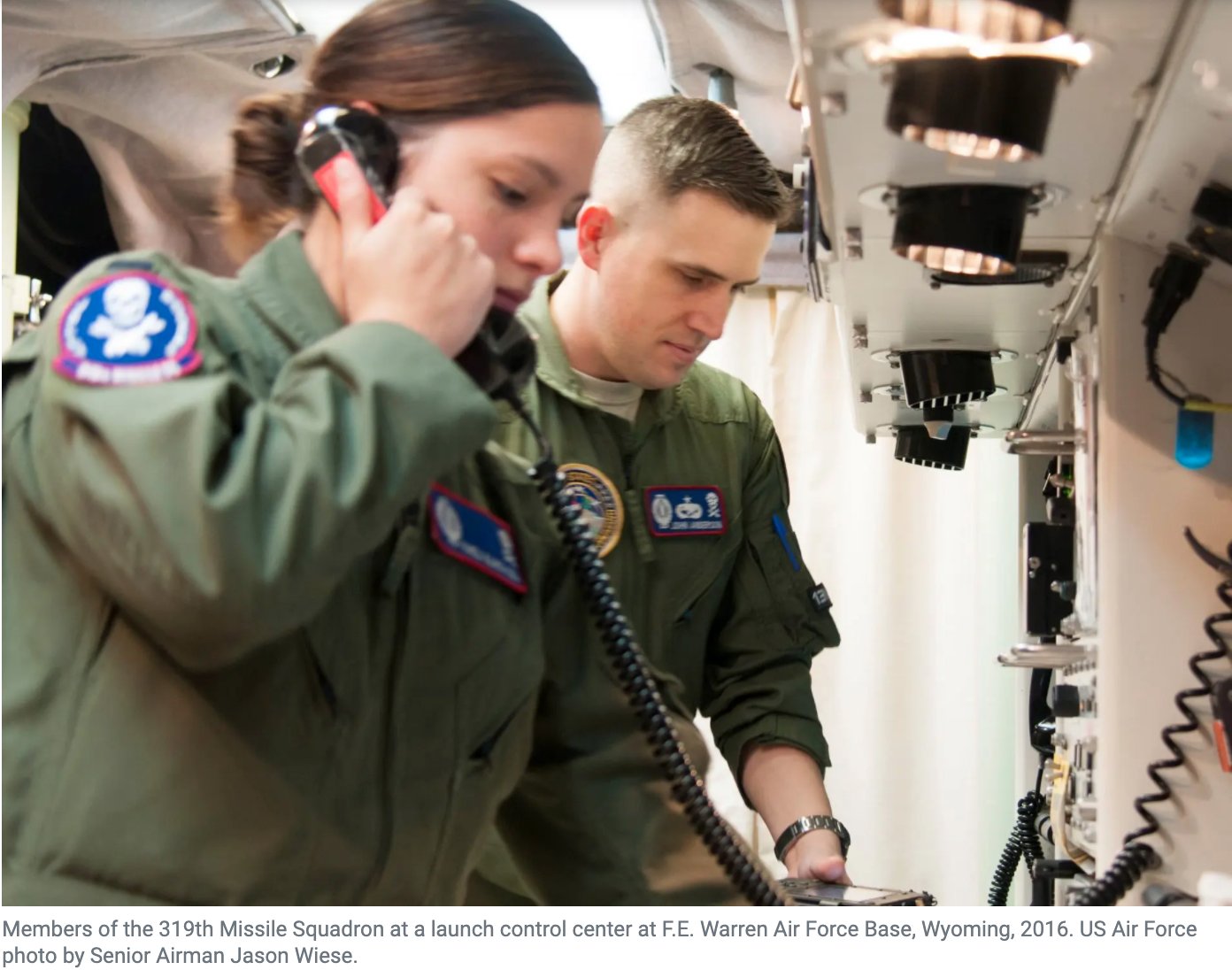
In recent weeks, the coronavirus outbreak has elicited at least a few tone-deaf comments from top US defense officials about the readiness of their nuclear forces. In mid-March, the commander of US Strategic Command, Adm. Charles Richard, reassured his audience that the United States’ nuclear forces had not been adversely affected by the pandemic and that they “remain ready to execute the nation’s strategic deterrence mission.” In effect, Adm. Richard was telling his audience that the United States was still capable of launching a massive nuclear retaliation that would undoubtedly kill millions. Similarly, at the beginning of April, the commander of the US Air Force’s Global Strike Command told Popular Mechanics that, despite the COVID-19 outbreak, “its nukes are still ready to fly.” These officials were apparently oblivious to the notion that, with the pandemic already causing enough fear and dread on its own, now may not be the best time to remind the general public about other ways the world could end.
What the United States loses by quitting the Open Skies treaty, in one chart
Reports emerged this week that the White House may be moving “soon” on withdrawing from the Open Skies treaty, a nearly two-decade-old agreement that allows 34 countries to fly and share reconnaissance missions over each other to promote military cooperation and transparency.

Last month, defense secretary Mark Esper said he was freezing a long-overdue replacement of the aging OC-135B aircraft used for flights under the treaty. “Until we make a final decision on the path forward, I am not prepared to recapitalize aircraft,” Esper told the Senate Armed Services Committee. Although more than 1,500 observation flights have been flown since the treaty took effect in 2002, vocal Republican opponents like Sens. Tom Cotton, Richard Burr, and Ted Cruz claim its benefit is “marginal” because US satellites make aerial imagery unnecessary, and the United States gives up more to its adversaries under the treaty than it gains. Their criticism extends from complaints about the costs of the OC-135B upgrade to protests over Russian compliance with the treaty—specifically, restrictions on missions flown over Kaliningrad and along Russia’s border with Abkhazia and South Ossetia. Cotton and Cruz introduced a resolution calling for withdrawal in October.
NNSA Production Sites Hunker Down Amid COVID-19 Crisis
All but one of the main Department of Energy nuclear weapons production sites have now hunkered down into minimum mission-critical operations because of COVID-19, keeping only the personnel needed to assemble nuclear weapons and components, maintain key infrastructure, or provide security.
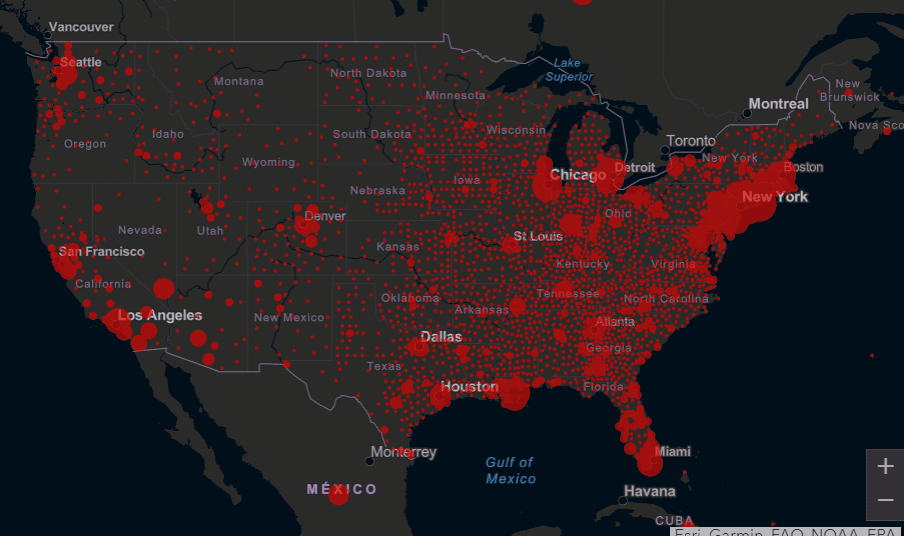
The Pantex Plant in Amarillo, Texas, and the Y-12 National Security Complex in Oak Ridge, Tenn., both announced the switch to minimum mission-critical operations this week, joining the Savannah River Site of Aiken, S.C., which adopted a similar posture late last month.
Only the Kansas City National Security Campus, which sits in the middle of a far worse outbreak than Pantex, Y-12, and Savannah River combined, had not gone down to the minimum mission-critical level of operations. The plant, which makes the non-nuclear parts of nuclear weapons, has reduced the number of people onsite since the outbreak and confirmed its first case of COVID-19 this week, saying Friday an employee “recently tested positive.”
The Coronavirus Can’t Stop America’s Nukes
Relying on a high-state of readiness, the nuclear triad is under threat from the coronavirus. But the head of Global Strike Command tells Popular Mechanics that its nukes are still ready to fly.
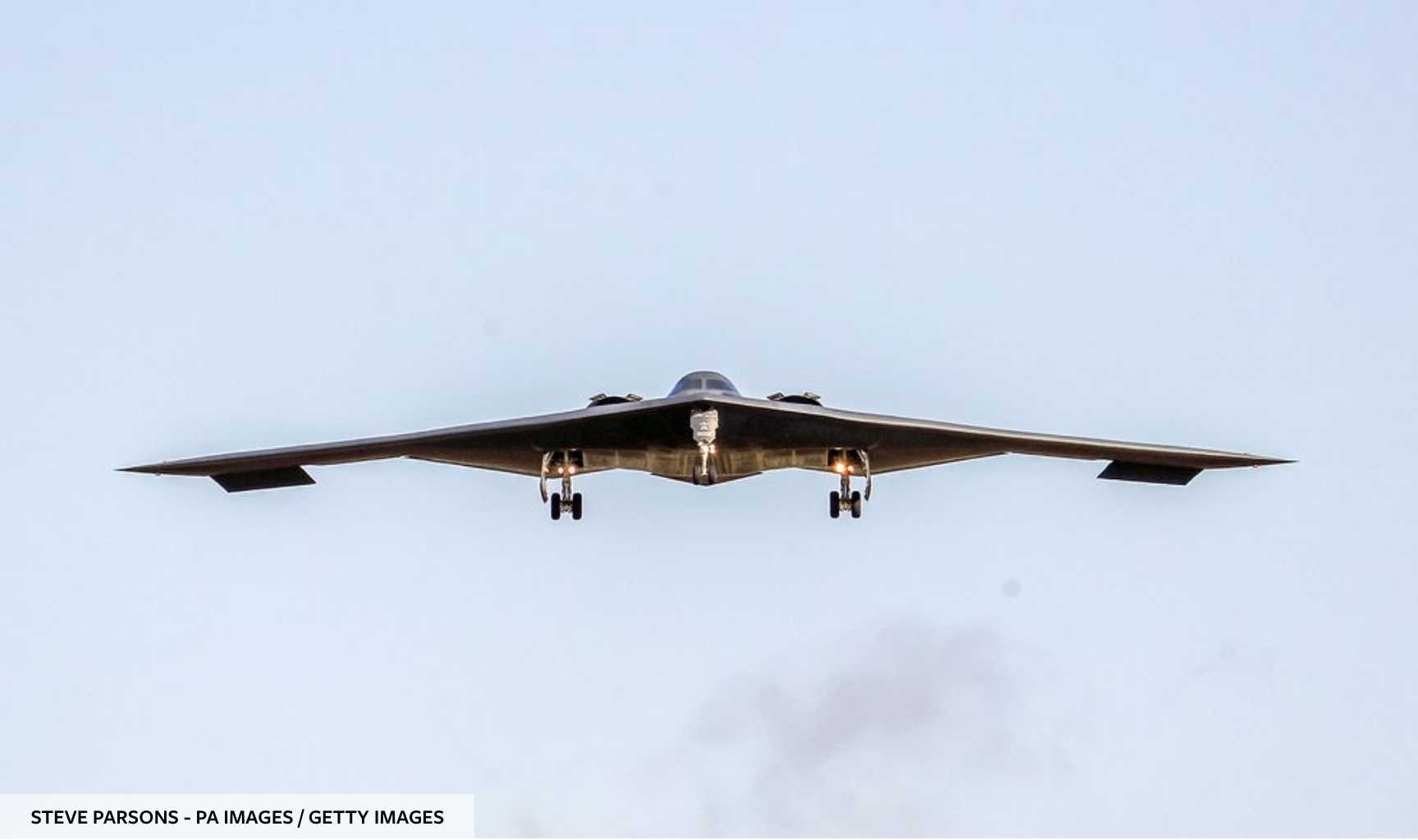
As the world fights against the COVID-19 pandemic, nuclear weapons have taken a backseat in most people’s minds. But for Global Strike Command (AFGSC)—the Air Force unit in control of two of the three legs of America’s nuclear triad—their mission remains top priority.
And it’s an unforgiving business. Nuclear deterrence requires extreme levels of readiness among pilots, maintenance crews, and security teams. Adversaries that don’t think the U.S. can respond with conventional bombing strikes or nukes could be emboldened to act aggressively.
OAK RIDGE ENVIRONMENTAL PEACE ALLIANCE CALLS FOR PUBLIC HEARING ON DOCUMENT ANALYZING HEIGHTENED EARTHQUAKE RISK AT NUCLEAR BOMB PLANT, ASKS FOR EXTENSION OF COMMENT PERIOD DUE TO PANDEMIC
The Oak Ridge Environmental Peace Alliance today filed a formal request with the Department of Energy and the National Nuclear Security Administration seeking an indefinite extension of the comment period and a public hearing on the NNSA’s study of earthquake and accident consequences at the Y-12 Nuclear Weapons Complex in Oak Ridge, Tennessee.
Citing a letter from twenty-two Senators that called for an indefinite extension of public comment periods until such time as the COVID-19 national state of emergency has ended, OREPA asked NNSA Administrator Lisa Gordon-Hagerty and Secretary of Energy Dan Brouilette to recognize the significant disruption in public and private life due to the COVID-19 pandemic and to respond appropriately.
After Decades of Secrets, Rocky Flats Should Still Give Pause
FOR MORE INFORMATION: The rockyflatsambushedgrandjury.com web site offers many Resource Materials in support of The Ambushed Grand Jury non-fiction and profit book about the Rocky Flats criminal investigation and Special Federal Grand Jury investigation, including pictures and videos.
Chernobyl fire: Huge forest blaze moves within one kilometre of abandoned nuclear plant
A forest fire that has raged in Ukraine for more than a week has spread to within a kilometre of the Chernobyl power plant, environmental campaigners have warned.
Footage of the region has shown fires raging through the 30km exclusion zone set up around the site of the worst nuclear disaster in history, with black smoke billowing into the sky as firefighters attempting to beat back the blaze from helicopters.
Lawmakers cry foul as Trump considers retreating from Open Skies Treaty
Supporters of a treaty meant to reduce the risk of accidental war are sounding the alarm President Trump could withdraw from the agreement as the world’s attention is consumed by the coronavirus pandemic.
BY REBECCA KHEEL | thehill.com
The Open Skies Treaty allows the pact’s 35 signatories, including the United States and Russia, to fly unarmed observation flights over each other’s territories with the intention of providing transparency about military activities to avoid miscalculations that could lead to war.
Administration officials insist a review is ongoing as four top Democrats warned this past week that withdrawing “in the midst of a global health crisis is not only shortsighted, but also unconscionable.”
“We are deeply troubled by the Trump administration’s sustained push to withdraw from the Open Skies Treaty and we reject the administration’s arguments for pursuing withdrawal,”
Continue reading
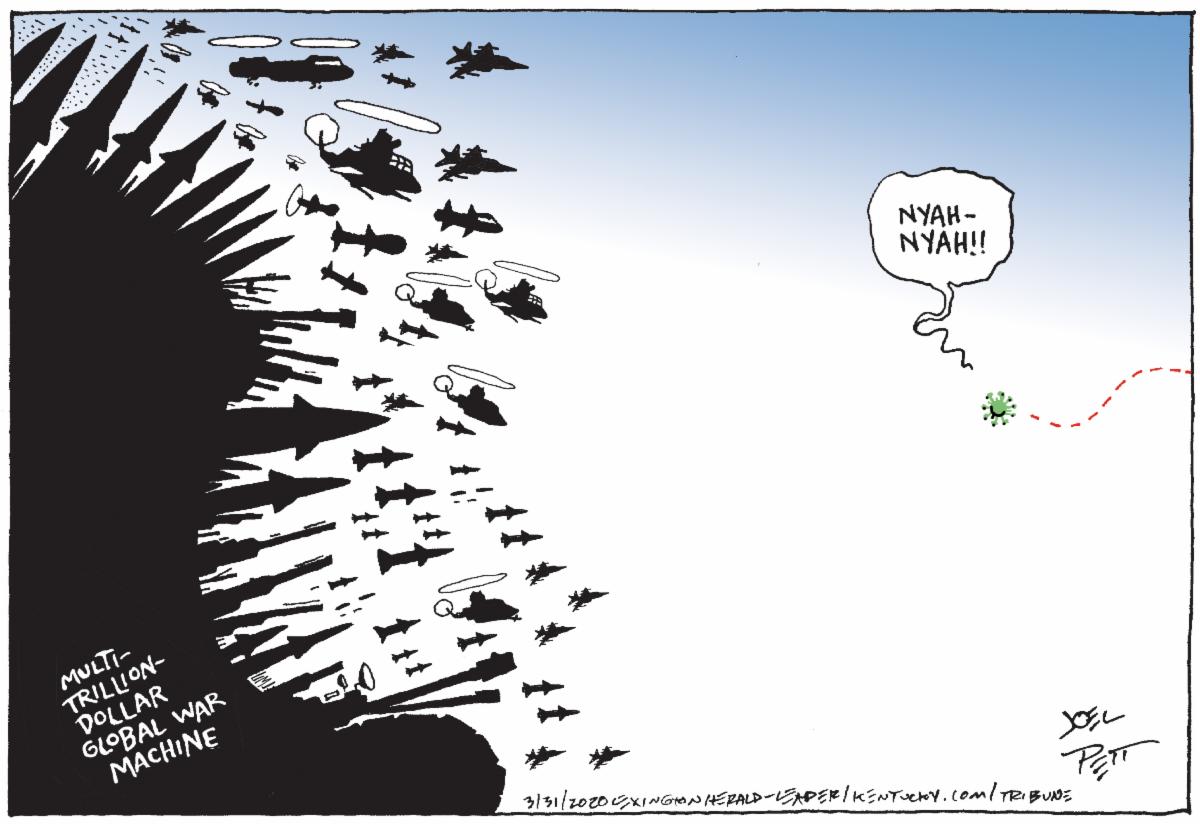
“While the 20th century equated national security with bombs, bullets and geography, national security in the 21st century is focused on 1s and 0s — the basis of our digital world — and dollars and cents. Reprioritizing spending away from weapons and towards maintaining U.S. economic, scientific and technological superiority will put us on the path toward economic growth and prosperity.” — Coronavirus unmasks America’s real national security vulnerabilities

Researchers Find Plutonium Particles in Soil Near Rocky Flats
“Researchers from Northern Arizona University (NAU) found extensive plutonium “hot” particles in soil near the former Rocky Flats nuclear site. Particles this size can be inhaled and lodged in lung tissue, increasing risk of radioactive exposure from inhalation.”
ARTICLE BY: KEELY SUGDEN | kdvr.com
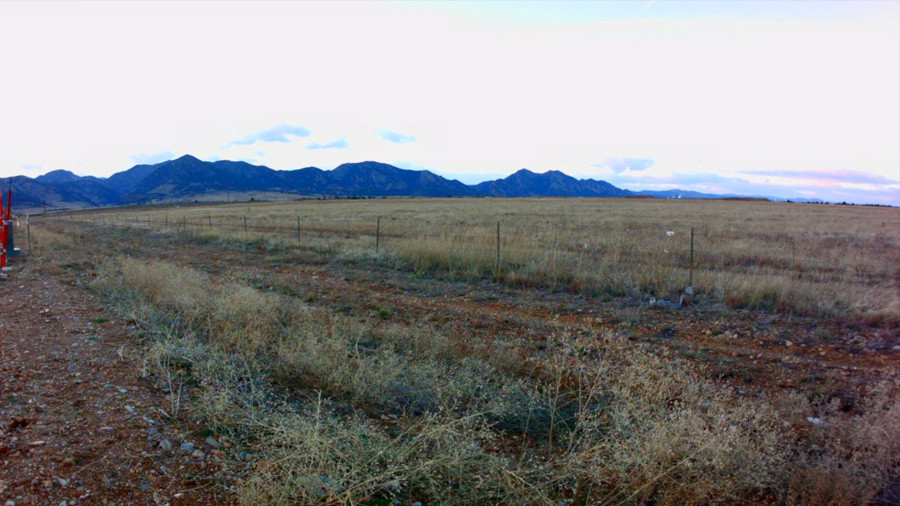
DENVER (KDVR) – Researchers Michael Ketterer and Scott Szechenyi from (NAU) concluded, “These particles are found to be pervasive in non-US Government land east of Rocky Flats, and it is reasonable to believe that ongoing wind transport is continuing to spread the contamination across open space used by the public, and toward residential areas.”
Surface soil was collected from the Jefferson County right-of-way property immediately west of Indiana Street in 2019.
NEW OAK RIDGE EARTHQUAKE RISK ANALYSIS SAYS PUBLIC SAFETY RISK IS TEN TIMES GREATER THAN PREVIOUS ESTIMATES
OREPA CALLS FOR PUBLIC HEARING: “WE HAVE A RIGHT TO BE INFORMED AND CONSULTED ABOUT THE RISKS.”
The third time is proving far from charming for the government’s plan to continue making nuclear bomb parts in Oak Ridge. The National Nuclear Security Administration this week released its third Supplement Analysis [SA] for the Y-12 Nuclear Weapons Complex. Buried on page 31 of the report is the finding that the consequences of a worst-case scenario are ten times greater under the current plan than previously disclosed in the 2011 Site-Wide Environmental Impact Statement.
Air Force Wants to Add More Long-Range Bombers to its Inventory
“The Air Force has been looking to improve its fleet by purchasing the upcoming B-21 Raider and modernizing the Boeing B-52 Stratofortress.” The Air Force has classified the costs of the B21 heavy bomber. Among other armaments, it will carry theW80-4 Long Range Stand Off nuclear warhead.
ARTICLE BY: CONNIE LEE | nationaldefensemagazine.org

The Air Force wants “just north” of 220 long-range bombers in its inventory by 2040, a service official said April 9.
Previously, the service said it wanted 175 aircraft in the current fleet, but “that was a programmatically derived approach,” Gen. Timothy Ray, head of Air Force Global Strike Command, told reporters during a call with reporters.
Udall Leads Senate Democrats In Urging Trump Administration to Indefinitely Extend Public Comment Periods and Pause Unrelated Federal Rulemakings During COVID-19 Pandemic Emergency
Trump administration is continuing controversial rulemakings that affect public health and safety – while the COVID-19 pandemic prevents Americans from weighing in on national policymaking process and necessary Tribal consultation
WASHINGTON—Today, U.S. Senator Tom Udall (D-N.M.) and 21 Senate Democrats sent a letter to Acting Director of the U.S. Office of Management and Budget (OMB) Russell Vought, calling on the executive branch to protect Americans’ right to participate in the democratic policy-making process, at a time when millions are worried about their and their loved ones’ health, safety and economic security and are unable to fully participate in the public comment process.
The senators requested that OMB indefinitely extend existing public comment periods and hearings until the public can safely gather after the dangers of the COVID-19 pandemic have passed.
LANL postpones radioactive vapor release because of COVID-19
“We’re pleased that LANL is postponing its massive radioactive tritium release, particularly as northern New Mexico braces for the coronavirus pandemic,” Jay Coghlan, executive director of Nuclear Watch New Mexico, said in a statement. “But postponement is not the answer. Since tritium decays so rapidly into harmless helium the lab should simply sit on it instead of putting the population at risk.”
ARTICLE BY: SCOTT WYLAND | santafenewmexican.com
Los Alamos National Laboratory will indefinitely postpone a project that would release radioactive vapors into the atmosphere because staff needed for the task are working from home during the COVID-19 pandemic.
The lab had planned to ventilate four containers of tritium-tainted waste April 17 to relieve built-up radioactive hydrogen in the barrels’ headspace to prevent them from rupturing while they are being handled or shipped. The U.S. Environmental Protection Agency approved the application for the radioactive release last year.
Coronavirus pandemic could delay Pentagon spending, policy bill, HASC chairman says
Rep. Adam Smith says widespread testing will play a major role in getting people back to work
ARTICLE BY: COREY DICKSTEIN | STARS AND STRIPES stripes.com
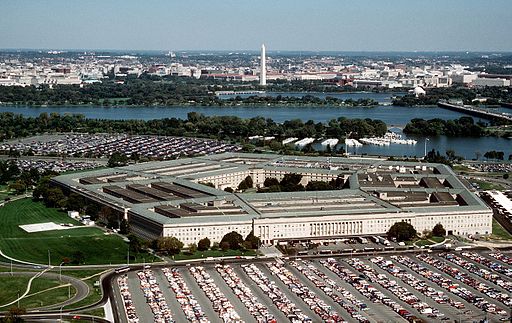 WASHINGTON — The coronavirus pandemic could delay federal funding bills, including the annual Pentagon spending and policy law, if the outbreak continues to paralyze American life into the summer months, a top House lawmaker on defense issues said Tuesday.
WASHINGTON — The coronavirus pandemic could delay federal funding bills, including the annual Pentagon spending and policy law, if the outbreak continues to paralyze American life into the summer months, a top House lawmaker on defense issues said Tuesday.
Rep. Adam Smith, D-Wash., told reporters that House Armed Services Committee members and staffers were moving forward in an effort to ready drafts of the 2021 National Defense Authorization Act by May 1. But with no end in sight to the pandemic and with most lawmakers at their homes across the nation, he worries about the Sept. 30 deadline for an on-time bill.
Continue reading
Coronavirus response to take priority in NDAA, House Armed Services chairman says
Rep. Adam Smith says widespread testing will play a major role in getting people back to work
ARTICLE BY: ANDREW CLEVENGER | rollcall.com
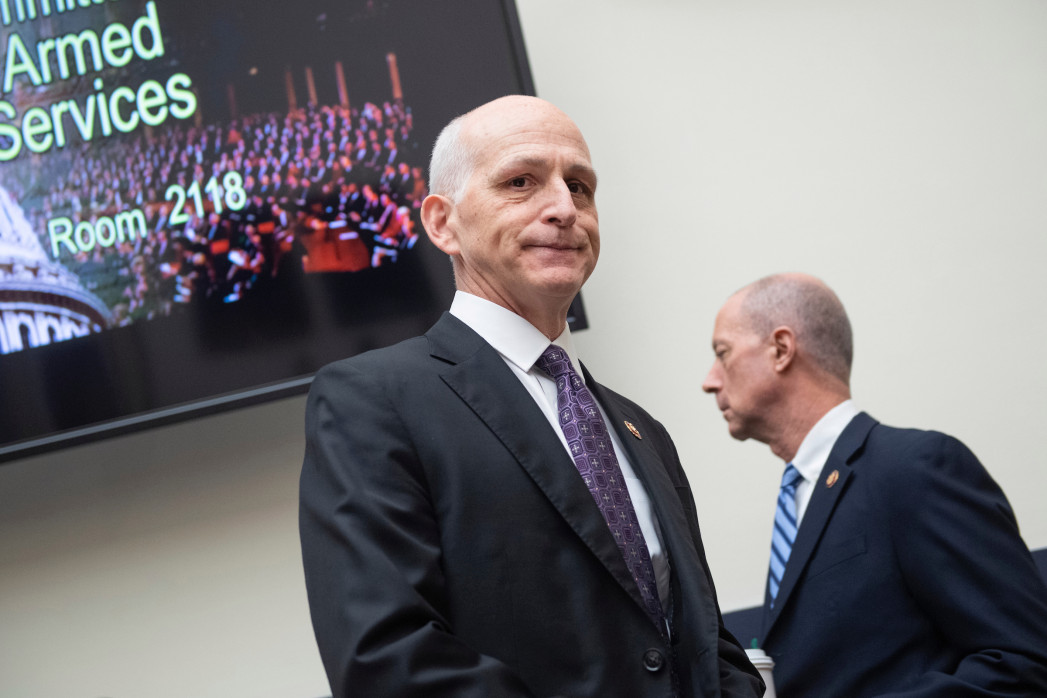
Ramping up production of testing materials for COVID-19 will be a top priority for this year’s annual defense policy bill, the chairman of the House Armed Services Committee said Tuesday.
Widespread testing will play a major role in getting people back to work, Washington Democrat Adam Smith told reporters during a press call. And some components of testing, like swabs, are already in short supply.
The Defense Department, Smith said, has a lot of experience and expertise in logistics and contracting and could lead government efforts to ensure the availability of extensive testing.
The Nuns, The Priests, and The Bombs
Nuclear disarmament activists challenge the security and legality of America’s nuclear weapons when they break into two top-secret facilities: The “Fort Knox of Uranium” and a U.S. Navy Trident nuclear submarine base.
Are they criminals or prophets sending a wake-up call to the world?
Russia’s nuclear workers isolated onsite as coronavirus spreads
Workers at Russia’s nuclear power plants will be isolated from the general public and required to live in onsite clinics at their respective stations as nuclear authorities tighten their response to the coronavirus after a number of industry infections.
BY CHARLES DIGGS | bellona.org
The order came Tuesday from Rosenergoatom, Russia’s nuclear utility, and specified that both primary and back up crews of nuclear technicians, who “facilitate process continuity” would now be required check in to dispensaries at their plants, where they would be provided with daily living essentials and isolated from outside contact.
Cleanup of U.S. Nuclear Waste Takes Back Seat as Virus Spreads
“The coronavirus pandemic demonstrates why we should get cleanup done once and for all,” said Jay Coghlan, executive director of Nuclear Watch New Mexico. “What we do as humans ebbs and flows with history, but the radioactive and toxic wastes that we leave behind last longer than our recorded history. We should be acting now.”
ARTICLE BY: SUSAN MONTOYA BRIAN | santafenewmexican.com
The U.S. government’s efforts to clean up Cold War-era waste from nuclear research and bomb making at federal sites around the country has lumbered along for decades, often at a pace that watchdogs and other critics say threatens public health and the environment.
Now, fallout from the global coronavirus pandemic is resulting in more challenges as the nation’s only underground repository for nuclear waste finished ramping down operations Wednesday to keep workers safe.
2019
12 States join the Nuclear Ban Treaty on International Day for the Total Elimination of Nuclear Weapons 2019
On the International Day for the Total Elimination of Nuclear Weapons, 12 states took another significant step towards achieving this goal by signing or ratifying the UN Treaty on the Prohibition of Nuclear Weapons, during a special High-Level Ceremony at the UN Headquarters in New York.
The five nations that ratified during the ceremony are:
- Bangladesh
- Kiribati
- Laos
- Maldives
- Trinidad & Tobago
These states are also joined by Ecuador, which became the 27th state to ratify the Treaty on September 25th, one day before the ceremony.
The following states signed on to the Treaty: Botswana, Dominica, Grenada, Lesotho, St Kitts and Nevis, Tanzania and Zambia, as well as the Maldives and Trinidad and Tobago (as the latter two states both signed and ratified the Treaty during the ceremony).
The treaty now has 79 signatories and 32 States Parties. By signing, a State commits to not take any action that would undermine the treaty’s object and purpose. Upon depositing its instrument of ratification, acceptance, approval or accession, a state becomes legally bound by the terms of the treaty. When the Treaty has 50 states Parties it will enter into force, making nuclear weapons illegal under international law.
The ceremony was hosted by long-time champions of the Treaty: Austria, Brazil, Costa Rica, Indonesia, Ireland, Mexico, New Zealand, Nigeria, South Africa and Thailand and enabled presidents and foreign ministers to take this important step while they were gathered at the UNGA.
Newly-elected President of the UN General Assembly, Mr Tijjani Muhammad-Bande of Nigeria, opened the ceremony, and spoke passionately in support of the Treaty’s importance in ending nuclear weapons. “We commend states that have joined TPNW and urge those who have not done so to do join in this most vital action,“ he said during his address to the UNGA Plenary event earlier in the day.
Beatrice Fihn, Executive Director of ICAN, celebrated the move by these 12 countries and the outspoken support for the Treaty around the world throughout the day. “Away from most cameras, we come together to do the actual work of nuclear disarmament. For the good of your people and the good of the world you propel the Treaty toward entry-into-force […] Today, in this room, I feel the scale tilting toward the Elimination of Nuclear Weapons. This day of action gives us all hope at a bleak time.”
After today, the treaty is almost two-thirds of the way to its entry into force, and this momentum is expected to continue. Several countries have confirmed to ICAN that their ratifications are imminent, and campaigners around the world will not stop until every country is on board.
Join the movement to end nuclear weapons
The full ceremony can be viewed here:
Help Stop The New Strategic Plan That Would Double WIPP’s Lifespan
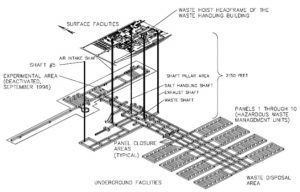
DOE Moves Forward With Unneeded New Shaft at WIPP
Originally billed as a replacement exhaust shaft to help WIPP recover from the 2014 exploding drum event that shut down WIPP for three years, a proposed new shaft is now designed to increase WIPP’s capacity. WIPP officials have repeatedly stated that after a new filter building is complete, WIPP will have returned to its pre-2014 capacity without the new shaft. The $75 million new fifth shaft would increase the mining and waste handling capacity by 25% at any given time.
One would think that increasing the annual ability to emplace waste at WIPP would help keep the repository on track to stop receiving waste by its original date of 2024. But along with the annual increased mining and disposal capacity, DOE has also released a Strategic Plan to extend WIPP’s waste disposal deadline to 2052.
Nuclear power is not the answer in a time of climate change
Wild weather, fires, rising sea levels, earthquakes and warming water temperatures all increase the risk of nuclear accidents, while the lack of safe, long-term storage for radioactive waste remains a persistent danger.
BY HEIDI HUTNER & ERICA CIRINO | aeon.co
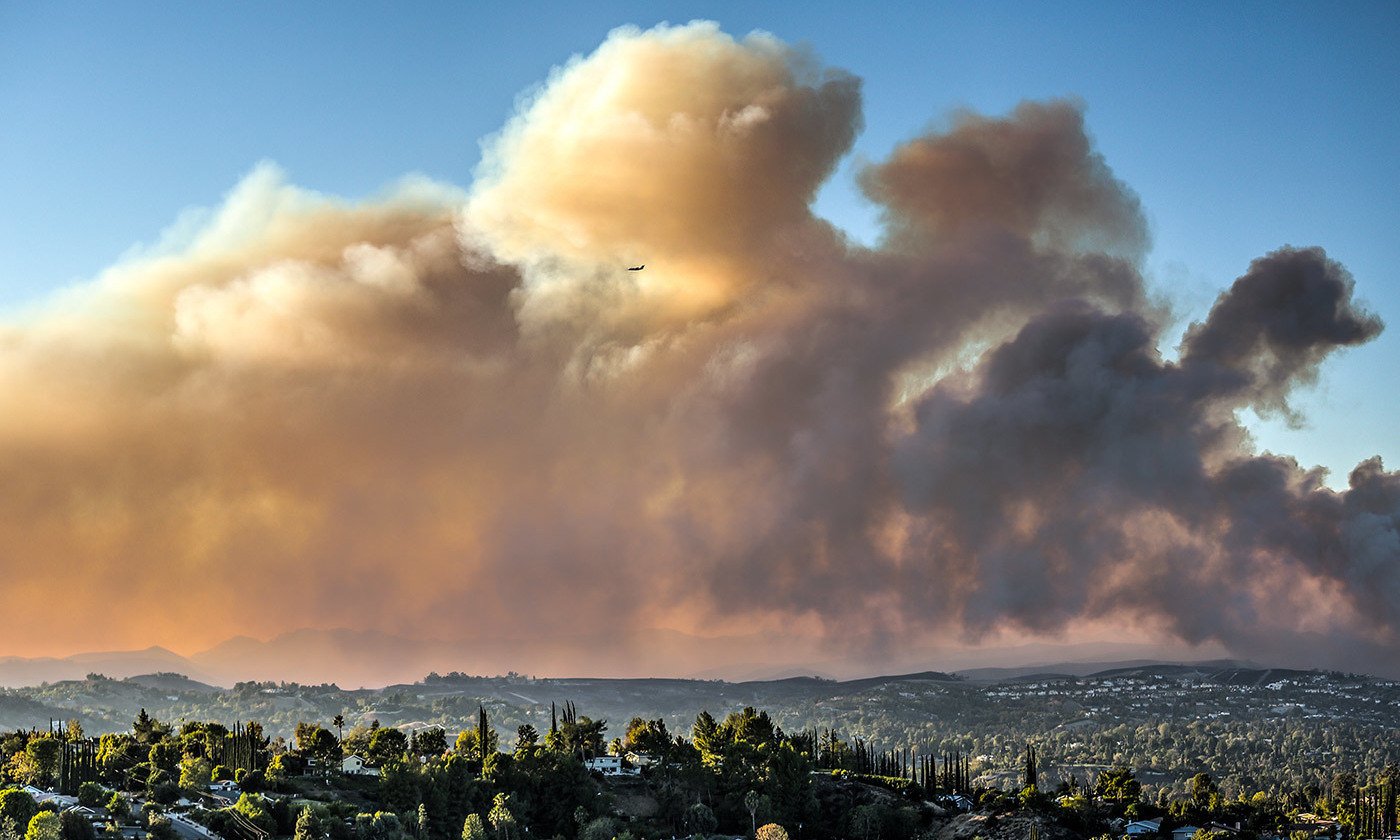
Proponents of nuclear power say that the reactors’ relative reliability and capacity make this a much clearer choice than other non-fossil-fuel sources of energy, such as wind and solar, which are sometimes brought offline by fluctuations in natural resource availability. Yet no one denies that older nuclear plants, with an aged infrastructure often surpassing expected lifetimes, are extremely inefficient and run a higher risk of disaster.
‘The primary source of nuclear power going forward will be the current nuclear fleet of old plants,’ said Joseph Lassiter, an energy expert and nuclear proponent who is retired from Harvard University. But ‘even where public support exists for [building new] nuclear plants, it remains to be seen if these new-build nuclear plants will make a significant contribution to fossil-emissions reductions given the cost and schedule overruns that have plagued the industry.’
Nuclear Abolition: The Road from Armageddon to Transformation
Nuclear weapons pose a grave threat to the future of civilization. As long as we allow these weapons to exist, we flirt with the catastrophe that they will be used, whether intentionally or accidentally.
ESSAY BY DAVID KRIEGER
Great Transition Initiative (August 2018), http://www.greattransition.org/publication/nuclear-abolition.
Meanwhile, nuclear weapons skew social priorities, create imbalances of power, and heighten geopolitical tension. Diplomacy has brought some noteworthy steps in curbing risks and proliferation, but progress has been uneven and tenuous. The ultimate aim of abolishing these weapons from the face of the earth—the “zero option”—faces formidable challenges of ignorance, apathy, and fatigue.
Yet, the total abolition of nuclear weapons is essential for a Great Transition to a future rooted in respect for life, global solidarity, and ecological resilience.
Judge voids UPF decision, requires more seismic hazard analysis
BY: JOHN HUOTARI oakridgetoday.com
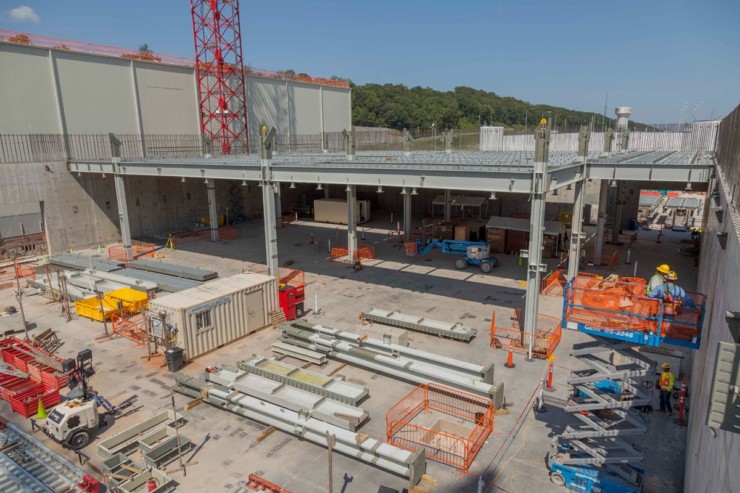
A federal judge in Knoxville on Tuesday said a critical decision made in 2016 for enriched uranium operations at the Y-12 National Security Complex, including for the $6.5 billion Uranium Processing Facility, violated a national environmental law, and she ordered the decision vacated, or set aside.
The UPF is already under construction, and Wedenesday morning, the National Nuclear Security Administration, which oversees work at Y-12, said construction will continue.
The 104-page opinion and order was filed in U.S. District Court on Tuesday by Chief U.S. District Judge Pamela L. Reeves.
The lawsuit was initially filed in U.S. District Court in the District of Columbia, but it was later moved to the Eastern District of Tennessee. Besides OREPA, the plaintiffs included two other public interest organizations—Nuclear Watch of New Mexico and Natural Resources Defense Council of Washington, D.C.— and several individual plaintiffs.
DOE for First Time Rejects Safety Board Recommendation – SRS Watch
SRS Watch and Nuclear Watch New Mexico have been working hard together on pit production issues. SRS Watch and NukeWatch NM, alongside other groups in ANA, have requested that the DNFSB now get involve in issue related to conversion of the canceled plutonium fuel (MOX) plant at SRS into a Plutonium Bomb Plant (PBP) to produce plutonium “pits” for nuclear weapons.
“The safety board informed ANA that it is monitoring the situation with pit production but we think they should actively be involved as NNSA continues to push this risky new mission on SRS,” said Clements of SRS Watch.
September 23 John F. Tierney, former US Representative and current executive director of the Council for a Livable World and the Center for Arms Control and Non-Proliferation, joins Joe Cirincione to discuss his work on the National Defense Authorization Act, and challenges the idea that US national security depends on ever-increasing defense spending.
News summary with Mary Kaszynski, Joe Cirincione, and Michelle Dover. Joe Cirincione answers a question from Clair in Massachusetts.
Listen, Subscribe and Share on iTunes · Spotify · SoundCloud · YouTube · Google Play · Sticher
Also available on ploughshares.org/pressthebutton
Sens. Warren, Sanders, Markey call on defense leaders to chill pit production push
Two Democratic presidential candidates believe there is no reason to produce 80 plutonium pits per year, as is planned, and have urged congressional defense leaders to step back and reconsider related legislation, according to a missive reviewed recently by the Aiken Standard.
September 23, 2019 | BY COLIN DEMAREST | aikenstandard.com

In a Sept. 13 letter, U.S. Sens. Bernie Sanders of Vermont and Elizabeth Warren and Ed Markey of Massachusetts described a significantly bolstered pit production mission as “unnecessary, unachievable and ill-advised,” citing an independent analysis that earlier this year cast serious skepticism on the National Nuclear Security Administration’s and U.S. Department of Defense’s recommended path forward.
That report, handled by the Institute for Defense Analyses, listed three cautionary findings in its publicly available summary: Reaching 80 pits per year is possible, but “extremely challenging”; no available option will likely satisfy the demand by deadline; and further risk assessment is needed.
A Congressional Budget Office study released earlier this year very roughly estimated pit production to cost $9 billion over the next decade.
Groups threaten to sue over nuclear weapons work at US labs
Copyright 2019 The Associated Press. All rights reserved.
LOS ALAMOS, N.M. — Nuclear watchdog groups say they will sue if the U.S. government doesn’t conduct a nationwide programmatic environmental review of its plans to expand production of key components for the nation’s nuclear arsenal.
Lawyers for the Natural Resources Defense Council, Nuclear Watch New Mexico, Savannah River Site Watch and Tri-Valley Communities Against a Radioactive Environment threatened legal action in a letter sent this week to officials.
In June, the National Nuclear Security Administration said it would prepare an environmental impact statement on pit-making at Savannah River. A less extensive review was planned for Los Alamos.
2018
New NNSA complex near Kirtland gets green light
Construction on a new complex has been authorized by the U.S. Department of Energy’s National Nuclear Security Administration to replace 25 aged and dilapidated buildings currently located near Kirtland Air Force Base and Sandia National Laboratories.
UC retains management of Los Alamos nuclear laboratory with new contract
The University of California will continue to manage the Los Alamos National Laboratory alongside two new partners.
The Button: By William J. Perry and Tom Z. Collina

The President has the power to end the world in minutes. Right now, no one can stop him.
Since the Truman administration, America has been one “push of a button” away from nuclear war—a decision that rests solely in the hands of the President. Without waiting for approval from Congress or even the Secretary of Defense, the President can unleash America’s entire nuclear arsenal.
Almost every governmental process is subject to institutional checks and balances. Why is potential nuclear annihilation the exception to the rule? For decades, glitches and slip-ups have threatened to trigger nuclear winter: misinformation, false alarms, hacked warning systems, or even an unstable President. And a new nuclear arms race has begun, threatening us all. At the height of the Cold War, Russia and the United States each built up arsenals exceeding 30,000 nuclear weapons, armed and ready to destroy each other—despite the fact that just a few hundred are necessary to end life on earth.
From former Secretary of Defense and Stanford professor of international relations William Perry and nuclear policy think-tank director Tom Collina, The Button is a fascinating narrative of our living nuclear history—one in which the players hold the fate of the whole world at their fingertips—and a look at presidential power from Truman to Trump.
POGO: Congress Pushes Back on Nuke Agency’s Unnecessary Plutonium Buildup
“In a letter to the Senate Energy and Water Development Appropriations Subcommittee last month, the Project On Government Oversight was joined by Nuclear Watch New Mexico and Savannah River Site Watch in requesting justification for this expanded capacity. NNSA has over 14,000 plutonium cores already constructed and in storage, many of them specifically designated for potential reuse in new nuclear weapons as part of a ‘strategic reserve.’
If the interoperable warhead is not needed or wanted by the Defense Department, then new pit production is not needed, and the MOX facility can be terminated once and for all. If it is, Congress should ensure that any path forward will be appropriately sized and scoped to meet that mission need. Either way, if all of these interlocking parts are not matched up as part of an overall strategy then there’s only going to be more waste, fraud, and abuse and it is the average American taxpayer who will pay the price.”
-Lydia Dennett, POGO investigator See her full report at POGO)
B2 Nuclear Stealth Bombers Arrive In UK
Russian military: incoming missiles will be shot down if they threaten Russian personnel. Trump: “Get ready Russia, because they will be coming, nice and new and smart!” Read More…
A BBC production, 2016.
New Contractors Selected For Expanded Nuclear Weapons Production at Los Alamos
Santa Fe, NM – Today the Department of Energy’s National Nuclear Security Administration (NNSA) announced its choice for the new management and operating contract for the Los Alamos National Laboratory (LANL).
The new contractor, Triad National Security, LLC, is a limited liability company consisting of the Battelle Memorial Institute, the University of California and Texas A&M University. All three are non-profits, and it is unclear how this will affect New Mexico gross receipts taxes.
Battelle claims to be the world’s largest non-profit technology research and development organization, and manages a number of labs including the Lawrence Livermore and Idaho National Laboratories. Texas A&M was founded in 1876 as the state’s first public institution of higher learning and has the largest nuclear engineering program in the country. DOE Secretary Rick Perry is an avid A&M alumnus.
The new contract includes a five-year base time with five one-year options, for a total of 10 years if all options are exercised. The estimated value of the contract is $2.5 billion annually.
The University of California (UC) ran the Lab from its beginning in 1943 until June 2006, when Los Alamos National Security, LLC (LANS), composed of the University of California (UC), Bechtel, AECOM and BWX Technologies, Inc., took over. That contract had a ten-year base period with ten one-year options, for a total of 20 years if all options were exercised. But LANS was terminated with nine years left of possible options. This was primarily due to LANS improperly preparing a barrel of radioactive wastes that ruptured, closing the Waste Isolation Pilot Plant for nearly three years. NNSA did not clarify why it is now issuing a shorter contract.
This change in contract follows a May 10, 2018 announcement by NNSA that production of plutonium pits, the fissile cores of nuclear weapons, will be expanded to at least 30 pits per year at LANL, and an additional 50 pits per year at the Savannah River Site. The Los Alamos Lab is the birthplace of nuclear weapons, and it is tying its future to increased nuclear weapons production, with the active support of the New Mexico congressional delegation. The Lab proposed, but failed to convince NNSA, to produce all 80 plutonium pits per year. LANL’s core research, testing and production programs for nuclear weapons now comprise 70% of its ~$2.5 billion annual budget, while much of the Lab’s remaining budget indirectly supports those programs.
Lisa E. Gordon-Hagerty, the new NNSA Administrator, testified during her confirmation hearing that expanded plutonium pit production is her number one priority. However, expanded production is NOT needed to maintain the safety and reliability of the existing nuclear weapons stockpile. In fact, no pit production for the existing nuclear weapons stockpile has been scheduled since 2011, and none is scheduled for the future. Up to 15,000 “excess” pits and another 5,000 in “strategic reserve” are already stored at DOE’s Pantex Plant near Amarillo, TX. In 2006 independent experts found that pits last a least a century (they currently average 40 years old). A 2012 follow-on study by the Livermore Lab found that the “graceful aging of plutonium also reduces the immediate need for a modern high-capacity manufacturing facility to replace pits in the stockpile.”
Future pit production is for speculative future new designs being pushed by the nuclear weapons labs, so-called Interoperable Warheads for both land- and sub-launched missiles that the Navy does not want. Moreover, future pits will NOT be exact replicas of existing pits. This could have serious potential consequences because heavily modified plutonium pits cannot be full-scale tested, or alternatively could prompt the U.S. to return to nuclear weapons testing, which would have severe international proliferation consequences.
Jay Coghlan, Nuclear Watch Director, commented, “Regardless of who runs the Lab, LANL will decrease mission diversification and increase nuclear weapons production, while holding cleanup flat at a tenth of its weapons budget. New Mexico been a nuclear weapons colony since WWII, and adding Battelle, Texas A&M, and the University of California is just more of the same. There will be little if any added benefit for New Mexico’s citizens.”
Groups Release Key DOE Documents on Expanded Plutonium Pit Production, DOE Nuclear Weapons Plan Not Supported by Recent Congressional Actions
“Santa Fe, NM & Columbia, SC. Two key U.S. Department of Energy documents on future production of plutonium “pits” for nuclear weapons, not previously released to the public, fail to justify new and upgraded production facilities at both the Los Alamos National Laboratory (LANL) in New Mexico and the Savannah River Site (SRS) in South Carolina.”
Groups Release Key DOE Documents on Expanded Plutonium Pit Production, DOE Nuclear Weapons Plan Not Supported by Recent Congressional Actions
Santa Fe, NM & Columbia, SC – Two key U.S. Department of Energy documents on future production of plutonium “pits” for nuclear weapons, not previously released to the public, fail to justify new and upgraded production facilities at both the Los Alamos National Laboratory (LANL) in New Mexico and the Savannah River Site (SRS) in South Carolina.
The report reveals that the initial cost estimate for these new and upgraded facilities at both sites is $10 billion by 2030, and around $46 billion in total life cycle costs. Plutonium pits are the fissile cores of nuclear weapons. Cost overruns are the rule for major projects undertaken by the National Security Administration (NNSA), the semi-autonomous nuclear weapons agency within DOE, so the costs are likely to rise yet more, according to Nuclear Watch New Mexico and Savannah River Site Watch.
NNSA’s Pu Pit Production Engineering Assessment, originally marked Unclassified Controlled Nuclear Information, was finalized on April 20, 2018. The 293-page document was obtained by Nuclear Watch and is being released so that the public may be fully informed about the agency’s misguided pursuit of new plutonium pit production facilities for future new-design nuclear weapons. The new NNSA Administrator has called future plutonium pit production her highest priority. But the Engineering Assessment fails to answer the most crucial question: why are at least 80 plutonium pits per year needed to begin with?
As background, on May 10, 2018, NNSA announced in a one-page statement:
To achieve DoD’s [Department of Defense] 80 pits per year requirement by 2030, NNSA’s recommended alternative repurposes the Mixed Oxide Fuel Fabrication Facility at the Savannah River Site in South Carolina to produce plutonium pits while also maximizing pit production activities at Los Alamos National Laboratory in New Mexico. This two-prong approach – with at least 50 pits per year produced at Savannah River and at least 30 pits per year at Los Alamos – is the best way to manage the cost, schedule, and risk of such a vital undertaking.
Nuclear Watch also obtained NNSA’s 14-page Plutonium Pit Production Engineering Assessment (EA) Results. That summary document, dated May 2018, relied on the Trump Administration’s 2018 Nuclear Posture Review for claiming the need for expanded plutonium pit production. However, that high-level review failed to state any concrete justification for the alleged pit need. Moreover, Congress is balking at funding any new pit production facilities at SRS, primarily because Sen Lindsey Graham (R-SC) vociferously opposes repurposing the MOX facility, now undergoing termination, and the New Mexico congressional delegation opposes any pit production outside of the Los Alamos Lab.
The Engineering Assessment details that NNSA analyzed four pit production options, one in the Mixed Oxide (MOX) Fuel Fabrication Facility at SRS and three options at Los Alamos. NNSA chose the most expensive combination, repurposing the MOX facility and increasing pit production at LANL to 30 pits per year. Los Alamos is currently authorized to produce 20 pits per year, but has failed to achieve even that because of ongoing nuclear criticality safety issues (moreover, LANL proposed to produce all 80 pits per year, which NNSA rejected). SRS has never produced pits, raising new nuclear risks at that site and concern about new waste streams.
The Engineering Assessment makes clear that “moderate risks” in the option of repurposing the MOX plant at SRS includes any failure to quickly terminate the MOX project, due to subsequent delays in closing out the project and terminating contracts. Likewise, the report affirms a long-held concern that there is a “very high probability for incomplete construction records/as-built drawings” for the MOX project. On May 10, DOE began congressionally sanctioned termination of the bungled MOX project, but it is being opposed in last-ditch, desperate attempts by Senator Lindsey Graham and the State of South Carolina. The Engineering Assessment makes explicitly clear that terminating the MOX program is the crucial prerequisite for plutonium pit production at SRS and that “some work [on repurposing the MOX plant] can be completed during MOX closeout,” contrary to both the wishes of Congress and requirements of the National Environmental Policy Act.
Expanded plutonium pit production is NOT needed to maintain the safety and reliability of the existing nuclear weapons stockpile, according to Nuclear Watch. In fact, no pit production for the existing nuclear weapons stockpile has been scheduled since 2011, and none is scheduled for the future. Up to 15,000 “excess” pits and another 5,000 in “strategic reserve” are already stored at DOE’s Pantex Plant near Amarillo, TX. In 2006 independent experts found that pits last a least a century[i] (they currently average 40 years old). A 2012 follow-on study by the Livermore Lab found that the “graceful aging of plutonium also reduces the immediate need for a modern high-capacity manufacturing facility to replace pits in the stockpile.” [ii]
Future pit production is for speculative future new designs being pushed by the nuclear weapons labs, so-called Interoperable Warheads for both land- and sub-launched missiles that the Navy does not support.[iii] Moreover, as the Engineering Assessment makes clear, future pits will NOT be exact replicas of existing pits. This could have serious potential consequences because heavily modified plutonium pits cannot be full-scale tested, or alternatively could prompt the U.S. to return to nuclear weapons testing, which would have severe international proliferation consequences.
The Engineering Assessment also explicitly links raising the administrative limit on plutonium at LANL’s “Rad Lab” to expanded pit production. This contradicts a recent draft environmental assessment in which NNSA claimed that re-categorizing the Rad Lab as a Hazard Category-3 nuclear facility was necessary only to maintain basic analytical chemistry capabilities, while omitting any reference whatsoever to expanded plutonium pit production.
The Engineering Assessment briefly outlines what could be a major vulnerability to NNSA’s pit production plans, that is the agency’s future compliance (or not) with the National Environmental Policy Act (NEPA). The Assessment states that if “compliance is delayed, [this] extends the schedule, increases costs, and/or delays production.” Both Nuclear Watch and SRS Watch assert that the law requires that major federal proposals be subject to public review and comment before a formal decision is made. Arguably, a formal decision to raise production to 80 pits or more per year necessitates a new or supplemental nation-wide programmatic environmental impact statement (PEIS), which the new dual-site decision strongly buttresses. Follow-on site-specific NEPA documents will then be necessary, with full public participation and hearings. All of this could introduce substantial delays to NNSA’s plutonium pit production plans.
“While it’s clear that the bungled MOX project is unworkable from technical and cost perspectives and must rapidly be terminated, there is no justification to convert the abandoned facility to a nuclear bomb production plant,” said Tom Clements, director of SRS Watch. “We agree that money must now be spent closing and securing the MOX building, but not on the new, unauthorized pit mission. Spending taxpayer funds to now begin conversion of the MOX plant to pit production, as is indicated in the pit report, is premature and can’t even be considered until Congress approves the NNSA approach for new facilities and an environmental impact review with public participation takes place,” added Clements.
Jay Coghlan, Nuclear Watch Director, commented, “NNSA has already tried four times to expand plutonium pit production, only to be defeated by citizen opposition and its own cost overruns and incompetence. We realize that this fifth attempt at a new pit plant is the most serious yet, but we remain confident it too will fall apart. The enormous financial and environmental costs of new nuclear bomb factories and the fact that expanded plutonium pit production is simply not needed for the existing nuclear weapons stockpile will doom this effort. We think the American public will reject new-design nuclear weapons, which is what this expanded pit production decision is really all about.”
Notes:
NNSA’s Plutonium Pit Production Engineering Assessment (EA) Results (14 slides) is available at
NNSA’s 293-page Pu Pit Production Engineering Assessment is available at
NNSA’s Joint Statement from Ellen M. Lord and Lisa E. Gordon-Hagerty on Recapitalization of Plutonium Pit Production, May 10, 2018, is available at
[i] Pit Lifetime (JSR-06-335), the MITRE Corporation, JASON, January 27, 2007, p. 19, http://www.fas.org/irp/agency/dod/jason/pit.pdf
This pivotal study came about because at Nuclear Watch New Mexico’s request then-Senator Jeff Bingaman (D.-NM) successfully offered an amendment to the FY 2004 Defense Authorization Act requiring it.
[ii] Plutonium at 150 years, Lawrence Livermore National Laboratory, December 2012,
https://www.llnl.gov/news/plutonium-150-years
[iii] See 2012 Navy memo demonstrating its lack of support for the Interoperable Warhead at https://nukewatch.org/importantdocs/resources/Navy-Memo-W87W88.pdf
Los Alamos Cleanup
Over the last decade funding for the Los Alamos National Laboratory’s (LANL’s) nuclear weapons programs has increased by 20%. However, funding for needed cleanup has remained flat at one-tenth of the $1.9 billion requested for nuclear weapons programs in FY 2019 ($191.6 million requested for cleanup in FY 2019). Continue reading
LANL to build part of next-gen nuclear weapons
“We’re trying to preach restraint to Iran, North Korea, the rest of the world,” says Coghlan, “and we’re going to go on to develop new-design nuclear weapons? That’s not practicing what we preach.”
MAY 11, 2018 | BY ROZ BROWN | nmpoliticalreport.com
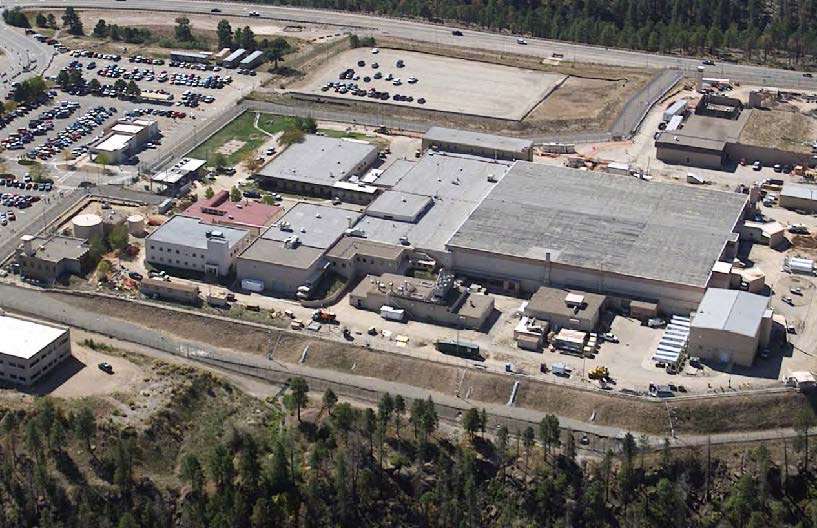
LOS  ALAMOS, N.M. – The National Nuclear Security Administration announced Thursday that New Mexico and South Carolina will share in the development of next generation nuclear weapons with expanded plutonium pit production.
ALAMOS, N.M. – The National Nuclear Security Administration announced Thursday that New Mexico and South Carolina will share in the development of next generation nuclear weapons with expanded plutonium pit production.
The “pit” is the core that triggers a nuclear warhead. The Trump administration wants to dramatically increase annual pit production, from 30 to 80. The NNSA says a troubled and not-yet-completed nuclear facility in South Carolina will be re-purposed to make 50 pits a year, while Los Alamos will make 30.
Nuclear watchdog groups are alarmed by the ramp-up. Jay Coghlan, director of Nuclear Watch New Mexico, insists the U.S. is setting a bad example.
2017
Nothing Found
It seems we can’t find what you’re looking for. Perhaps searching can help.
2016
Nothing Found
It seems we can’t find what you’re looking for. Perhaps searching can help.
2015
Nothing Found
It seems we can’t find what you’re looking for. Perhaps searching can help.


